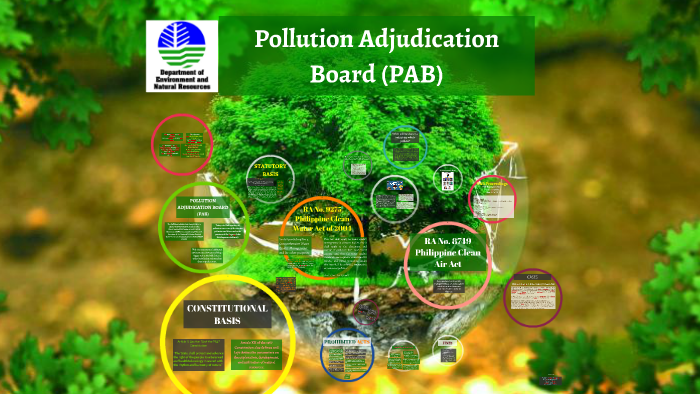Navigating the Pollution Adjudication Board (PAB) process can be a complex and daunting task for businesses, individuals, and organizations dealing with environmental compliance issues. The PAB plays a critical role in adjudicating cases related to pollution violations, making it essential for those involved to understand the procedures, requirements, and best practices for engaging with the Board. This article provides a comprehensive guide to navigating the PAB process, helping stakeholders effectively manage their cases and ensure compliance with environmental regulations.
Understanding the Pollution Adjudication Board
The Pollution Adjudication Board is an administrative body responsible for resolving disputes and enforcing environmental laws. Its jurisdiction includes cases related to air and water pollution, waste management, and other environmental concerns. The PAB’s primary function is to adjudicate violations of environmental regulations, impose penalties, and ensure corrective actions are taken.
Key Functions of the PAB
- Adjudication of Environmental Violations: The PAB hears and decides cases involving alleged violations of environmental laws and regulations.
- Issuance of Orders and Penalties: The Board has the authority to issue orders for compliance and impose fines or other penalties on violators.
- Monitoring Compliance: The PAB monitors the implementation of its orders to ensure compliance and prevent further violations.
Preparing for the PAB Process
Before engaging with the PAB, it is crucial to thoroughly prepare your case. Preparation involves gathering relevant documents, understanding the allegations, and developing a clear strategy for presenting your position. Here are some steps to consider:
1. Understand the Allegations
The first step is to thoroughly understand the nature of the allegations against you or your organization. Review any notices of violation or other documents provided by the regulatory authorities. Identify the specific environmental regulations that are alleged to have been violated and the evidence supporting these allegations.
2. Gather Evidence and Documentation
Collect all relevant documents and evidence that support your case. This may include:
- Permits and licenses related to your operations.
- Environmental monitoring reports and data.
- Correspondence with regulatory authorities.
- Records of any corrective actions taken.
Ensure that all documents are well-organized and easily accessible, as they will be critical in presenting your case to the PAB.
3. Seek Legal Counsel
Engaging legal counsel experienced in environmental law can be invaluable in navigating the PAB process. An attorney can help you understand your rights, obligations, and the legal nuances of the case. They can also assist in preparing your submissions, representing you in hearings, and negotiating settlements if necessary.
4. Develop a Strategy
Develop a clear strategy for your case, considering the strengths and weaknesses of your position. Determine whether you intend to contest the allegations, seek a reduction in penalties, or propose a settlement. Your strategy should be based on a thorough understanding of the facts and the legal framework.
The PAB Hearing Process
The PAB process typically involves a series of hearings where both the complainant (usually a regulatory authority) and the respondent (the alleged violator) present their cases. The process generally includes the following stages:
1. Initial Filing and Notice
The process begins with the filing of a complaint or notice of violation by the regulatory authority. The respondent will receive a notice outlining the allegations and the date of the initial hearing.
2. Preliminary Conference
A preliminary conference may be held to discuss procedural matters, such as the scheduling of hearings and the exchange of documents. This conference can also provide an opportunity to explore the possibility of settlement.
3. Presentation of Evidence
During the hearings, both parties will present their evidence and arguments. The complainant will present their case first, followed by the respondent. Witnesses may be called, and cross-examination is allowed.
4. Submission of Position Papers
After the presentation of evidence, both parties may be required to submit written position papers. These documents summarize the evidence presented, the legal arguments, and the desired outcomes.
5. Decision and Order
The PAB will review the evidence and issue a decision, which may include findings of fact, conclusions of law, and an order. The order may require corrective actions, impose penalties, or provide other remedies.
6. Appeal Process
If either party is dissatisfied with the PAB’s decision, they may have the right to appeal the decision to a higher administrative or judicial body. The appeal process and timeline will depend on the specific regulations and legal framework governing the case.
Ensuring Compliance and Following Up
Once the PAB issues its decision and order, it is crucial to ensure compliance with the requirements. Failure to comply with the PAB’s orders can result in additional penalties and enforcement actions. Here are some steps to take:
1. Implement Corrective Actions
If the PAB’s order includes requirements for corrective actions, such as pollution control measures or environmental remediation, promptly implement these actions. Ensure that all measures are completed according to the specified timelines and standards.
2. Monitor Compliance
Continue to monitor your operations and environmental impacts to ensure ongoing compliance with environmental regulations. Regular monitoring can help identify potential issues early and prevent future violations.
3. Maintain Communication with Authorities
Maintain open communication with regulatory authorities and the PAB. Report on the progress of corrective actions and compliance measures as required. Transparent communication can demonstrate your commitment to environmental responsibility and may help in resolving future issues.
Conclusion
Navigating the Pollution Adjudication Board process requires careful preparation, a clear understanding of the legal and factual issues, and effective representation. By following the steps outlined in this article, businesses, individuals, and organizations can better manage their cases, ensure compliance with environmental regulations, and minimize the impact of any penalties or orders. Remember, the PAB process is not just about resolving disputes but also about promoting environmental stewardship and protecting the natural environment for future generations.

Leave a Reply